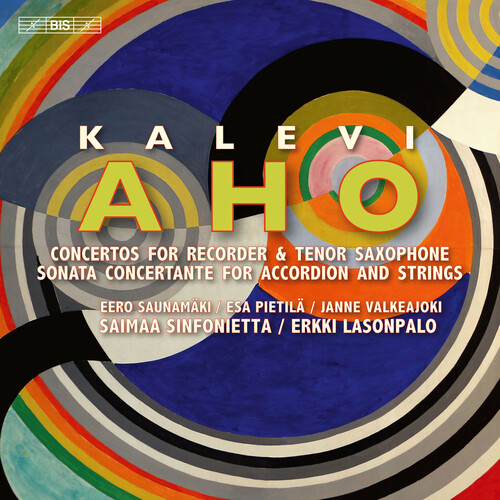Show results for
Deals
- 4K Ultra HD Sale
- Action Sale
- Alternative Rock Sale
- Anime sale
- Award Winners Sale
- Bear Family Sale
- Blu ray Sale
- Blues on Sale
- British Sale
- Classical Music Sale
- Comedy Music Sale
- Comedy Sale
- Country Sale
- Criterion Sale
- Cult Films sale
- Drama Sale
- Electronic Music sale
- Horror Sci fi Sale
- Jazz Sale
- Kids and Family Sale
- Metal Sale
- Music Video Sale
- Musicals on Sale
- Mystery Sale
- Naxos Label Sale
- Page to Screen Sale
- Paramount Sale
- Rap and Hip Hop Sale
- Reggae Sale
- Rock
- Rock and Pop Sale
- Rock Legends
- Soul Music Sale
- TV Sale
- Vinyl on Sale
- War Films and Westerns on Sale

Concertante Works for Recorder Saxophone
- (Hybrid SACD)
- Format: SACD
- Release Date: 9/1/2023

Concertante Works for Recorder Saxophone
- (Hybrid SACD)
- Format: SACD
- Release Date: 9/1/2023
- Composers: Kalevi Aho
- Label: Bis
- UPC: 7318599926469
- Item #: 2632934X
- Genre: Classical
- Release Date: 9/1/2023

Product Notes
Concertante works featuring the recorder, tenor saxophone and accordion are few and far between. Stimulated by daring soloists, the prolific Finnish composer Kalevi Aho has composed such works, contributing in his own way to the development of an original and attractive repertoire. The Concerto for Recorder requires the soloist to play four types of recorder, from bass to sopranino. The work explores extended techniques and also does not shy away from flashbacks to the golden age of the instrument. Aho received the initial impetus for his Concerto for tenor saxophone after a concert by Esa Pietilä. Aho wrote a concerto with contrasting sections that gradually exploits the full potential of the tenor saxophone and also makes use of an oriental goblet drum (darabuka) that sometimes also takes centre stage. The origins of the Sonate Concertante for accordion and strings goes back to Aho's first Sonata for accordion of 1984. Noting it's orchestral character, soloist Janne Valkeajoki suggested making a concertante version with strings. Here, Aho sought to extend the technical possibilities of the instrument to the maximum and to write for it a work of astounding virtuosity, like Franz Liszt's most demanding piano compositions.

